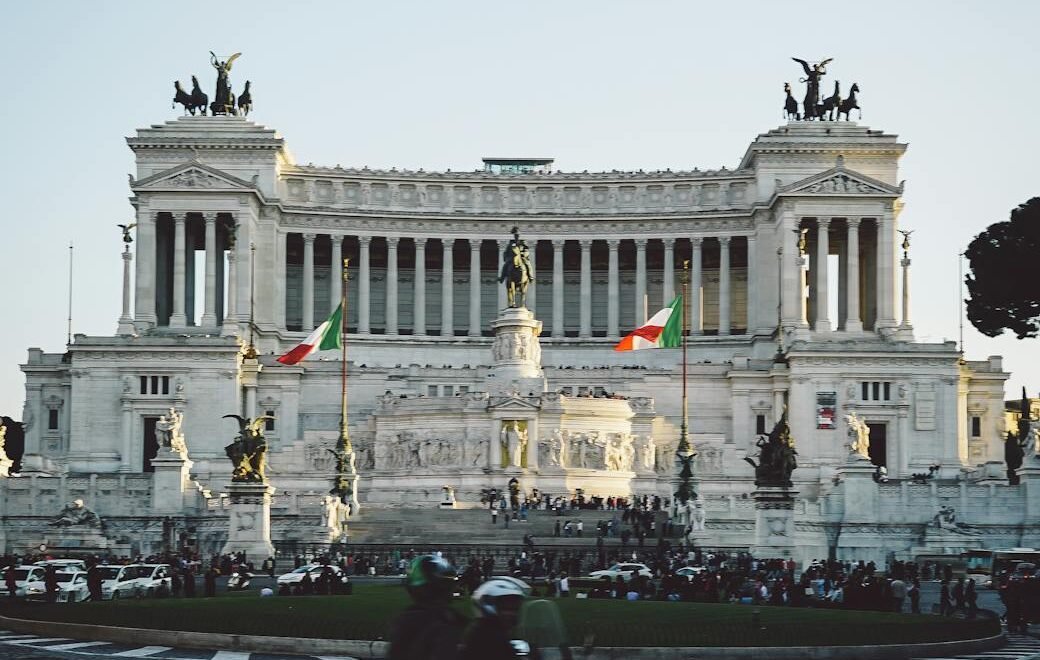Introduction: Understanding the Rise and Fall of Civilizations
The study of empires, their rise and eventual decline, provides valuable insights into the cyclical nature of civilizations throughout history. The Roman Empire, an iconic example of one such civilization, exemplifies the trajectories of prosperity, expansion, and ultimately, fragmentation. At its zenith, Rome’s influence permeated across continents, establishing a complex network of political, economic, and social systems that shaped the course of Western civilization. Its fall, marked by a culmination of internal and external pressures, offers essential lessons relevant to contemporary societies.
When examining the dynamics of civilizations, key themes emerge that illuminate common trajectories. Economic stability, military strength, and cultural achievement often characterize the rise of empires, with each aspect interconnected in fostering a robust society. However, as prosperity grows, so do the challenges. Overextension, internal strife, and moral decay often precede decline, suggesting an inevitable cycle that civilizations cannot escape. Importantly, these factors reveal how societal values and governance play critical roles in the sustainability of an empire.
In comparing the Roman Empire with contemporary America, it becomes necessary to explore analogies and contrasts in their respective narratives. Both civilizations experienced significant growth periods, propelled by innovation, resource management, and a flourishing cultural milieu. However, signs of potential decline in America mirror historical precedents, raising questions about societal resilience and adaptability. As we delve deeper into this comparative analysis, the indicators of societal change—economic disparity, political polarization, and cultural shifts—will be examined in light of historical patterns established by Rome.
This exploration into the rise and fall of civilizations helps frame the ongoing discussion about the sustainability of contemporary America. By understanding the Roman experience, lessons can be gleaned which might guide current and future societal trajectories. The interplay of prosperity and decline remains a poignant reminder that historical patterns often echo in the present.
The Ascent of Rome: Factors Leading to Greatness
The rise of the Roman Empire is a multifaceted phenomenon influenced by a variety of critical factors. Military conquests served as a primary catalyst in the expansion of Roman territory and power. The Roman legions were noted for their discipline, strategic prowess, and innovation in warfare. The annexation of lands not only increased Rome’s influence but also provided essential resources that fueled its economic growth, thus imbuing the empire with both wealth and military strength. Unlike many of its competitors, Rome efficiently integrated conquered peoples, contributing to a more unified empire.
Political stability is another significant element in Rome’s ascent. The establishment of a robust republican government allowed for effective administration and governance, laying the groundwork for later imperial rule. Successful leaders such as Julius Caesar and Emperor Augustus implemented reforms that not only stabilized the political system but also facilitated public works that improved infrastructure. This resulted in better transportation and communication networks that connected diverse regions of the empire, enhancing trade and administrative efficiency.
Economic prosperity also played a crucial role in Rome’s rise. The empire established vast trade networks that connected Europe, North Africa, and the Middle East. Such interactions fostered the exchange of goods, ideas, and technologies, which accelerated cultural advancements. The introduction of a standardized currency simplified trade, further stimulating economic growth. Furthermore, advancements in agriculture and engineering contributed to surplus production, ensuring food security and bolstering the population.
Lastly, cultural achievements were integral to Rome’s identity and success. The emphasis on education, literature, and philosophy cultivated a shared sense of civic pride and unity among Roman citizens. Art and architecture flourished, exemplified by monumental structures like the Colosseum and the aqueducts, which showcased engineering ingenuity and societal values. Collectively, these factors illustrate how strong governance, military might, economic wealth, and cultural depth coalesced to propel Rome to unimaginable heights of greatness, drawing intriguing comparisons to the contemporary rise of America.
The Current State of the United States: Achievements and Challenges
The United States has experienced significant growth and transformation over the past century, establishing itself as a global leader in various domains, including technology, economy, and culture. The rapid advancement in technology has revolutionized industries and everyday life, with innovations such as the internet, smartphones, and artificial intelligence reshaping communication, business, and education. These technological achievements have not only enhanced efficiency but have also solidified the nation’s position as a hub for innovation and entrepreneurship.
Economically, the United States has maintained a robust financial system and has been characterized by resilience in the face of economic downturns. The country’s GDP represents one of the largest in the world, signifying a diverse and dynamic economy that encompasses a range of sectors from finance to agriculture. Moreover, American cultural influence is palpable worldwide, as seen in the global proliferation of its music, films, and lifestyle trends, which continue to shape cultural identities beyond its borders.
However, alongside these achievements, the United States currently faces considerable challenges that threaten its stability and cohesion. One of the most pressing issues is political polarization, which has manifested in greatly divided public opinion and contentious discourse. This division hampers effective governance and has led to increasing disillusionment among citizens regarding the political process. Furthermore, economic inequality has surged, with a substantial gap between the affluent and the impoverished. This disparity raises questions about social mobility and access to opportunities, leaving many populations feeling marginalized.
Social unrest has also become more prominent, as movements advocating for civil rights and social justice highlight systemic issues within society. The challenges faced by contemporary America serve as a reminder of the complexities and vulnerabilities that can accompany prosperity. This contemporary scenario invites thoughtful comparison with the challenges that beset Rome during its decline, drawing parallels between two powerful nations, separated by time yet intertwined in experiences of rise and fall.
Indicators of Decline: Lessons from Rome
The decline of the Roman Empire provides numerous indicators that can serve as cautionary lessons for contemporary America. One of the foremost signs was economic instability, characterized by disrupted trade networks, over-reliance on agricultural production, and rampant inflation. As the empire expanded, it encountered immense pressure on its financial systems, a situation that echoes present-day concerns in the United States regarding economic inequality and fluctuating markets. Both societies faced challenges balancing wealth concentration with equitable opportunities, raising questions about long-term economic sustainability.
Corruption was another critical factor in the fall of Rome. As government officials sought personal gain, trust in leadership eroded, diminishing civic engagement and participation. The parallels to current American politics are stark, where public scandals and perceived graft have led to widespread disenchantment with governmental institutions. This erosion of public trust could undermine the necessary cooperation between citizens and their leaders, jeopardizing the fabric of democracy.
Military overreach also plagued Rome, as resources were stretched thin in efforts to maintain control over vast territories. This strategy drained the empire’s military and financial resources, contributing to its vulnerability to external threats. In a similar vein, the contemporary United States grapples with extensive military commitments abroad. The debate surrounding whether such engagements enhance national security or deplete resources mirrors the historical context of Rome’s military expeditions, prompting critical reflection on the sustainability of current foreign policy decisions.
Lastly, the loss of civic virtue among citizens fueled a sense of apathy towards civic responsibilities. Rome’s citizens became increasingly detached from public life, which weakened communal bonds. In the U.S., there are emerging concerns regarding declining voter turnout and civic engagement. Such trends point to a vital question: without active participation, how can a society maintain the democratic principles that underpin its stability?
Cultural and Moral Shifts: The Role of Society
The trajectory of empires has often been influenced by cultural and moral shifts, which, in the case of Rome, played a crucial role in its eventual decline. During its zenith, Roman society thrived on shared values and collective identity, which fostered a sense of community among its citizens. However, over time, these foundational attributes began to erode. Factors such as increased individualism, the luxury of wealth disparity, and the decline of civic participation contributed to a cultural fragmentation that left Roman citizens more isolated and less inclined to engage in communal life. The moral decay observed during this period was epitomized by indulgence in excess and a waning commitment to the collective good, which ultimately weakened the societal fabric.
In drawing parallels with contemporary America, one can observe similar trends in the evolution of societal values. Although the United States has experienced substantial advancements in technology and individual rights, there has been a discernible shift towards individualism that echoes Rome’s later years. Social cohesion has increasingly been undermined by materialism and the prioritization of personal gain over communal welfare. Shared values that once unified diverse groups have diminished, creating a landscape where individuals often find themselves at odds with one another rather than collaboratively working towards common objectives.
The impact of these cultural shifts extends beyond mere social interactions; they reshape core institutions, affecting political discourse, governance, and civic responsibility. The erosion of a shared moral compass can lead to widespread disillusionment, civic disengagement, and ultimately, a weakened society. Both Rome and contemporary America illustrate how the failure to nurture communal bonds and uphold collective ethical standards can precipitate decline. The lessons drawn from historical precedents highlight the importance of fostering a robust civic culture, anchored in shared values, to avert the pitfalls observed in past empires.
The Role of Leadership: Comparing Political Structures
Leadership plays a pivotal role in the stability and prosperity of any civilization, be it the Roman Empire or contemporary America. In Rome, the political structure was characterized by a blend of monarchy, oligarchy, and democracy, shifting significantly over time. Initially, the Roman Republic thrived under a system that allowed elected officials to govern, yet it was deeply influenced by societal elites. The rise of figures such as Julius Caesar showcased how powerful leaders could alter the political fabric, leading to periods of autocracy and ultimately the establishment of the Roman Empire.
Modern America, while founded on democratic principles, exhibits complexities in its political structure that echo certain Roman tenets. The existence of a two-party system, combined with lobbying and special interest groups, underscores a dynamic where leadership can often be swayed by external influences similar to the patron-client relationships seen in ancient Rome. Current political leaders, much like their Roman counterparts, face immense pressures that can either strengthen or destabilize the government. Attributes such as charisma, decisiveness, and strategic thinking are paramount for contemporary leaders aiming to navigate these complexities effectively.
The effectiveness of governance in both contexts can significantly affect societal cohesion and public trust. In Rome, the transition from republic to empire illustrated how leadership traits could prompt drastic changes, leading to civil unrest or stability depending on the rulers’ abilities. Similarly, in the United States, the leadership qualities delineated by modern politicians can inspire citizens, instilling confidence or fear regarding the nation’s trajectory.
By analyzing these political structures and the role of leadership within them, it becomes evident that the lessons from the Roman Empire are pertinent today. The interplay between leadership qualities and governance provides a framework for understanding the potential futures of contemporary political entities, emphasizing the timeless relevance of effective leadership in maintaining stability.
Military Power and Expansion: The Costs of Empire
The military power of an empire often serves as a crucial determinant of its expansion and subsequent stability. The Roman Empire, at its zenith, exhibited extensive military prowess, conquering vast territories across Europe, North Africa, and parts of Asia. These conquests were initially perceived as a source of wealth and security; however, they also introduced significant costs. The relentless drive for expansion strained resources, leading to logistical challenges and a burgeoning military budget that proved unsustainable over time.
Additionally, the over-extension of military forces left the Roman Empire vulnerable to external threats and internal dissent. Placing garrisons across far-flung territories weakened the central authority and made effective governance increasingly difficult. This depletion of resources became a double-edged sword, as the costs of maintaining an imperial army began to outweigh the benefits of territorial expansion. Moreover, the reliance on mercenaries introduced loyalty issues, contributing to the empire’s fragility.
In a contemporary context, the United States reflects some parallels with Rome in its approach to military power and expansion. Post-World War II, the U.S. established itself as a global leader, adopting a posture characterized by military interventions and alliances. While initially aimed at containing communism and promoting democracy, this extensive involvement in international conflicts has raised questions regarding the sustainability of such an expansive military strategy. The United States faces similar challenges of escalating military expenditures and resource allocation that mirror Rome’s historical experience.
As the U.S. continues to engage in military actions around the globe, considerations regarding the long-term implications of such policies echo the lessons learned from Rome’s costly imperialism. Factors such as dwindling public support for overseas interventions underscore the pressing need for a reassessment of military strategies that prioritize effective engagement without succumbing to the pitfalls of over-extension.
Public Sentiment and Civic Engagement: The Voice of the People
Public sentiment has always played a pivotal role in shaping the destinies of empires, from ancient Rome to contemporary America. The collective attitudes and beliefs of the populace significantly influence political movements and governance. In Rome, a complex tapestry of public opinion was woven into the fabric of daily life, affecting everything from military conquests to the appointment of leaders. Citizens engaged in political discourse and collective action, emphasizing their role in governance through public assemblies and forums. The decline of the Roman Empire can partly be attributed to a growing disconnect between the governing elite and the general populace, leading to political apathy among citizens whose voices became increasingly muted.
Similarly, the current political landscape in the United States exhibits parallels in the role of public sentiment. Civic engagement has arguably waned, with a notable decline in voter turnout and participation in community dialogues. This disengagement raises concerns about the strengthening of democratic values and the overall health of the political system. The consequences of public apathy can be perilous; when citizens withdraw from civic responsibilities, they allow for the erosion of accountability among political leaders. This is evident in contemporary debates surrounding issues such as healthcare and education, where the voices of the people are crucial in driving meaningful change.
Moreover, the rise of social media has transformed public discourse. In today’s digital age, platforms serve as conduits for expressing and shaping public sentiment. While this can foster dialogue, it also risks amplifying divisions. The need for critical engagement in these forums is paramount to ensure that the collective voice of the populace contributes to a better civic sphere. As both Rome and modern America illustrate, the interplay between public sentiment, civic engagement, and political leadership is vital to a nation’s trajectory, highlighting the importance of fostering active participation in the civic process.
Conclusion: Reflecting on the Future of America
The comparative analysis of the Roman Empire and contemporary America offers profound insights regarding the trajectory of societies and the common pitfalls that can lead to their decline. As we reflect on the lessons gleaned from history, it becomes clear that the trajectory of an empire is not solely defined by its economic power or military, but also by its capacity for internal cohesion and adaptability. Rome’s fall was a complex outcome of various factors, including political instability, social inequality, and failure to adapt to changing circumstances. America, in navigating its own path, stands at a critical juncture where awareness of these historical precedents can prove invaluable.
The challenges faced by contemporary America—rising polarization, growing economic disparities, and environmental crises—echo those experienced by Rome in its twilight years. It is crucial for policymakers and citizens alike to engage with these historical lessons to foster an environment that values resilience and sustainability. By recognizing the vulnerabilities that can undermine societal integrity, America can endeavor to cultivate unity, equity, and adaptability.
Moreover, the journey of Rome underscores the importance of civic engagement and informed public discourse. As empires rise and fall, public participation in governance becomes paramount. American society must prioritize dialogue to ensure that diverse perspectives inform decision-making processes. This collective effort can mitigate the risks associated with extremism and apathy, creating a more robust political landscape.
Ultimately, the experiences of past empires remind us that history is not merely a record of events but a teacher offering guidance for future actions. By integrating these lessons into the present, America can aim to sidestep the errors of the past and craft a narrative that emphasizes resilience in the face of contemporary challenges. As such, the lessons from Rome remain not only relevant but essential, urging us to forge a more sustainable future.



Hello i am kavin, its my first time to commenting anyplace, when i read this post i thought
i could also make comment due to this good post.
What you’ve written here is not just a collection of words; it’s a thoughtful exploration of what it means to be human.
This isn’t just writing; it’s a beautiful exploration of thought, full of insights that feel like small revelations.
Your words carry a persistent, gentle energy. They unfold naturally, inviting the reader to reflect, linger, and discover insight without force or hurry.
There’s a subtle magnetism in your writing, drawing the reader inward without effort. Each sentence feels considered, yet spontaneous, allowing thought and feeling to intertwine naturally.